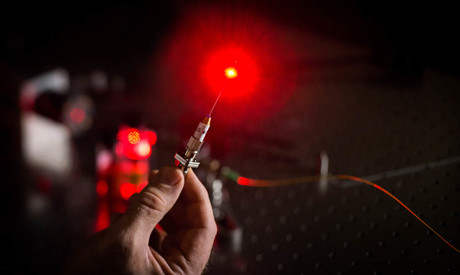The needle that makes brain surgery safer

Researchers at the University of Adelaide have developed a brain biopsy needle with a tiny imaging probe inside, enabling surgeons to ‘see’ and avoid at-risk blood vessels as they insert the needle into patients’ brains.
Professor Robert McLaughlin, chair of Biophotonics at the university’s Centre for Nanoscale BioPhotonics, explained that surgeons currently rely on scans taken prior to surgery to avoid hitting blood vessels — a method which is unfortunately not as accurate as surgeons would like.
“There are about 256,000 cases of brain cancer a year and about 2.3% of the time you can make a significant impact that could end in a stroke or death,” he noted.
The smart needle, on the other hand, works “sort of like an ultrasound but with light instead”, said Professor McLaughlin. “It contains a tiny fibre-optic camera, the size of a human hair, shining infrared light to see the vessels before the needle can damage them.
“It also has smart software that takes the picture, analyses it and it can determine if what it is seeing is a blood vessel or tissue,” he said.
Professor McLaughlin and his team are already in discussions with medical device manufacturers with a view to manufacture the smart needles here in Australia. According to Professor McLaughlin, manufacturing could feasibly begin within five years.
“It’s an ideal technology to commercialise in Australia,” said Professor McLaughlin. “We have the engineering expertise and world-class hospitals here, and enthusiasm from the surgeons.”
The smart needle has been used as part of a pilot trial in neurosurgery patients at Sir Charles Gairdner Hospital, Western Australia, for the past six months. It will be ready for formal clinical trials in 2018.
mRNA successfully delivered through blood–brain barrier
Getting mRNA into the brain could allow scientists to instruct brain cells to produce therapeutic...
Biological computer could revolutionise medical sciences
The CL1 is a commercial biological computer which fuses lab-cultivated neurons from human stem...
Genetic risk of schizophrenia impacts men and women differently
Men tend to present different clinical symptoms from women, poorer premorbid functioning and...




